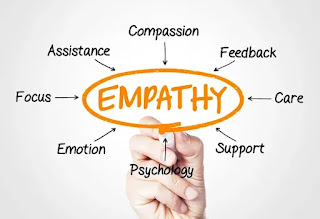Empathy in Diversity: Building Bridges, Not Barriers
We live in a world rich with culture, background, belief, and identity. But with that diversity comes a powerful responsibility: to listen, learn, and lead with empathy.
Empathy in diversity isn't just about being kind—it's about actively seeking to understand others who are different from us. It’s how we build inclusive spaces, heal social divides, and create a world where everyone feels seen and valued.
“Empathy is about finding echoes of another person in yourself.” — Mohsin Hamid
🌍 What Is Empathy in Diversity?
Empathy in diversity is the ability to connect emotionally and intellectually with people whose lives, identities, and experiences differ from your own. It's more than tolerance—it's about:
-
Listening without judgment
-
Challenging personal biases
-
Validating others' experiences
-
Creating inclusive environments
True empathy isn’t passive—it invites us to step into someone else’s shoes and walk with them, even when the terrain is unfamiliar.
💡 Why Empathy in Diversity Matters
-
🤝 Builds stronger, inclusive communities
-
🧠 Expands personal perspective and emotional intelligence
-
💼 Fosters collaborative, equitable workplaces
-
🗣️ Reduces prejudice and unconscious bias
-
💞 Creates belonging for marginalized voices
In relationships, teams, or society, empathy is the foundation for real understanding.
🛠️ How to Cultivate Empathy in a Diverse World
1. Listen to Learn, Not to Reply
Give people space to share their stories and truths.
2. Educate Yourself
Read books, watch documentaries, and follow voices outside your usual circle.
3. Reflect on Your Own Biases
We all have blind spots—acknowledge them to grow.
4. Be Curious, Not Critical
Ask questions with a genuine heart, not judgment.
5. Stand Up for Others
Empathy also means action—speak up when someone is being excluded or treated unfairly.
📚 5 Essential Books on Empathy and Diversity
Want to build deeper understanding and awareness? These books offer powerful insights on compassion across cultures, identities, and human experiences.
1. "The Empathy Effect" by Helen Riess
🧠 A neuroscience-based exploration of how empathy works—and how to strengthen it, especially in diverse settings.
2. "Blindspot: Hidden Biases of Good People" by Mahzarin R. Banaji & Anthony G. Greenwald
🔍 Reveals how our unconscious biases shape our views and behavior, even when we mean well.
3. "Between the World and Me" by Ta-Nehisi Coates
📖 A powerful letter from a father to his son, exploring race, identity, and systemic injustice in America.
4. "The Person You Mean to Be" by Dolly Chugh
🌈 Practical and heartfelt, this book helps “good” people do better and be more inclusive, even when it’s uncomfortable.
5. "Americanah" by Chimamanda Ngozi Adichie
🎨 A novel that weaves personal narrative with cultural insight, capturing the immigrant experience and nuances of race and belonging.
🗣️ Empathy Starts With Conversation
Try these prompts in your next diverse discussion:
-
“I’d love to understand your perspective—what’s it been like for you?”
-
“How can I support or be a better ally?”
-
“What do you wish more people knew or asked about your experience?”
-
“Thank you for sharing that—it means a lot to me.”
🌟 Final Thoughts
Empathy in diversity isn’t a destination—it’s a lifelong journey of learning, humility, and love.
“It is not our differences that divide us. It is our inability to recognize, accept, and celebrate those differences.” — Audre Lorde
Let’s build a world where curiosity replaces judgment, and compassion becomes the default. When we listen to others' stories, we expand the richness of our own.
👉 How has a diverse perspective changed your life?
Drop a comment below—we learn best when we learn together. 💬🌏

Comments
Post a Comment